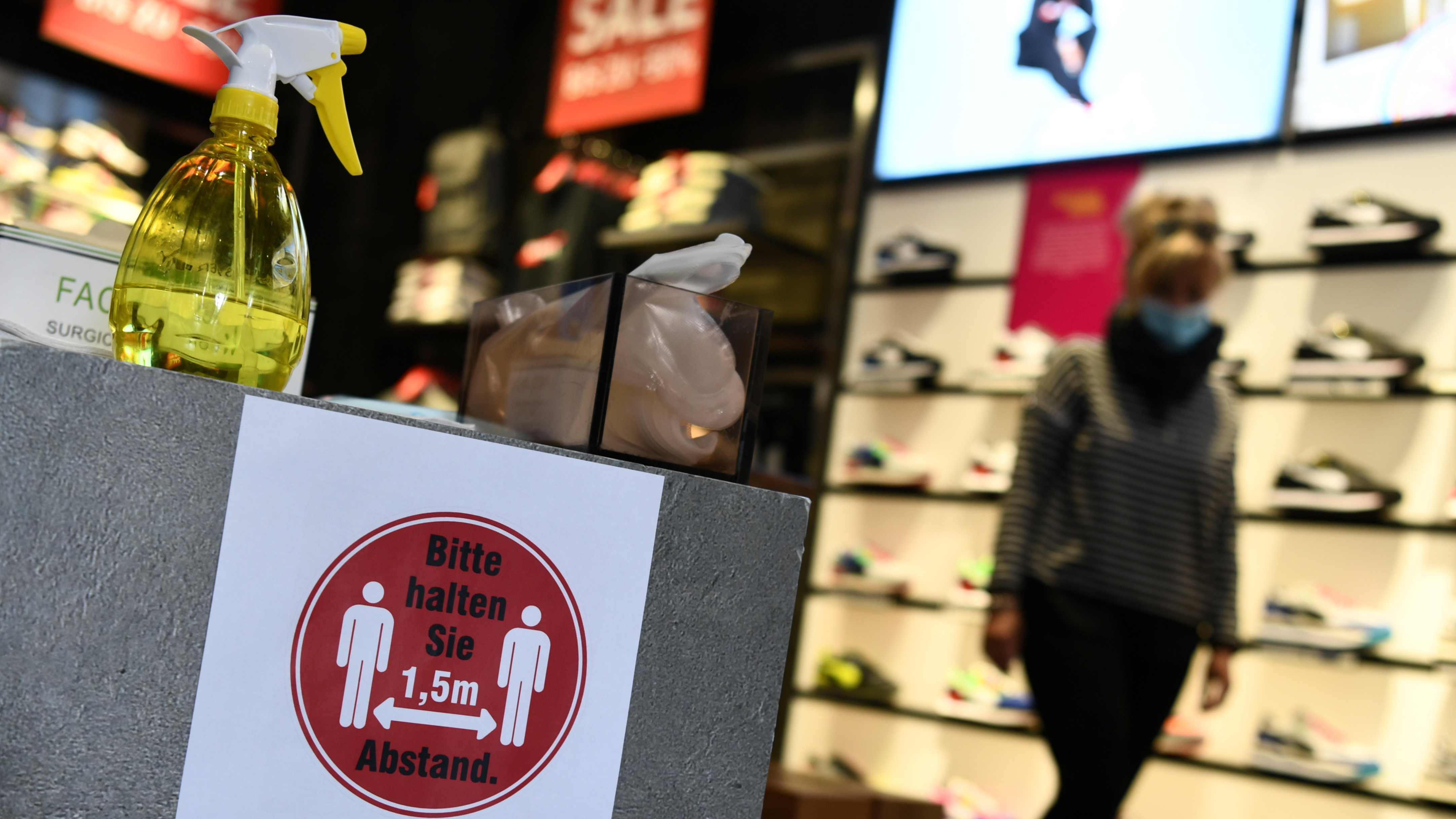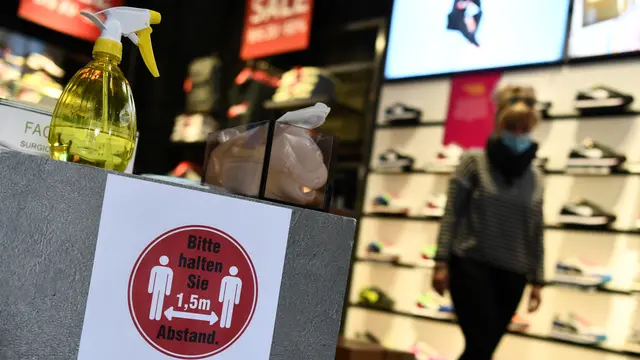
On 7 April, Germany's R-number stood at 1.3, which Chancellor Angela Merkel later warned could have pushed the country's healthcare system to full capacity within two months. /Annegret Hilse / Reuters
To many, its approach to the COVID-19 pandemic is a model of how to do things right.
But concerns are growing in Germany about the impact of easing the lockdown, as its infection rate continues to fluctuate erratically following the move to unlock the country's economy.
With smaller businesses reopening, and some students due to return to their classrooms in a matter of days, the mood appears to have changed in Berlin these past few days. It just seems busier and more relaxed. You can feel it. However, businesses are still feeling the pinch.

According to Germany’s public health body, the Robert Koch Institute, Germany’s reproduction rate hit 1.0 on Tuesday. /John MacDougall / AFP
Cafe owners you speak to lament a lack of customers. There are no tourists; many are working from home; and even when pedestrians do head out, spending is not as easy as it used to be.
Worries that coins – if not banknotes – could spread the coronavirus arguably impact smaller-ticket purchases in an economy where many vendors still accept cash only.
There are strict social-distancing measures in place meaning customer-facing businesses aren't allowed to be as full as they were before the outbreak. And consumer confidence has tanked anyway, so people just don't want to spend as much money.
And if concerns have eased slightly as the lockdown has been relaxed, they have not gone away.
The streets might be busier – and social distancing measures not always adhered to – but now face masks are compulsory. Their visible presence could reawaken any awareness that might have been lost, either by a sense that Germany has things in hand, or simply due to lockdown fatigue.
Keeping down the 'R rate'
Continued caution would certainly not misplaced. Whatever the public might have taken from the headlines "Lockdown Eased", officials are still urging the public to be vigilant. And may have to say it louder, because a key figure for tracking Germany's progress in tackling the coronavirus has been going up again.
According to Germany's public health body, the Robert Koch Institute, Germany's reproduction rate (R0) hit 1.0 on Tuesday, R0 being the mean number of people expected to be infected by a single coronavirus case.
That is as high as it can go before hospitals would start filling up again. If it stayed above 1.0 for a sustained period, even Germany's developed health system would be unable to cope within a few months at best.
And remember, we may be living with this virus for some time. So it's important – depending on the strategy – to keep that 'R-number' down, not just in the initial phase, but to keep it down over a sustained period of time.
On 7 April, Germany's R-number stood at 1.3, which Chancellor Angela Merkel later warned could have pushed the country's healthcare system to full capacity within two months.
That dropped to 0.7 by 16 April as the true impact of restrictions began to take hold. The latest figures from the Robert Koch Institute show that number has dropped below 1.0 again since, to an average of 0.76 as of Thursday.
Economic lockdown

Representatives of the travel industry were protesting – while adhering to the current restrictions on gatherings – in cities across the country, demanding more government support. /Annegret Hilse / Reuters
The volatile fluctuation may stoke debate about how fast Germany should ease its lockdown measures. For example, the foreign Minister, Heiko Maas, has now extended its worldwide travel warning until 14 June at least.
That will hammer its travel and tourism sector, not least German airline Lufthansa, which could well collapse without a bailout.
As Maas was announcing the measures, representatives of the travel industry were protesting – while adhering to the current restrictions on gatherings – in cities across the country, demanding more government support.
The German economy is suffering terribly. The economy ministry says it expects a recession in 2020 on a scale not seen since World War II.
So the plan is to relieve the economy while bringing in alternative measures to slow the spread of the coronavirus: extensive testing and tracing, for example, and the compulsory use of face masks in shops and on public transport.
The rise in Germany's R-number could turn out to be a blip. But it still serves as a reminder of how narrow the path ahead looks even here. And the very real dilemmas Germany could face if the R-number reaches – or surpasses 1.0 again.
As some of Germany's neighbors follow its example, this could soon be their dilemma, too.
CGTN Europe has been providing in-depth coverage of the novel coronavirus story as it has unfolded.
Here
you can read the essential information about the crisis.
Sign up
here
to get the COVID-19 Europe bulletin sent directly to your inbox
 简体中文
简体中文




